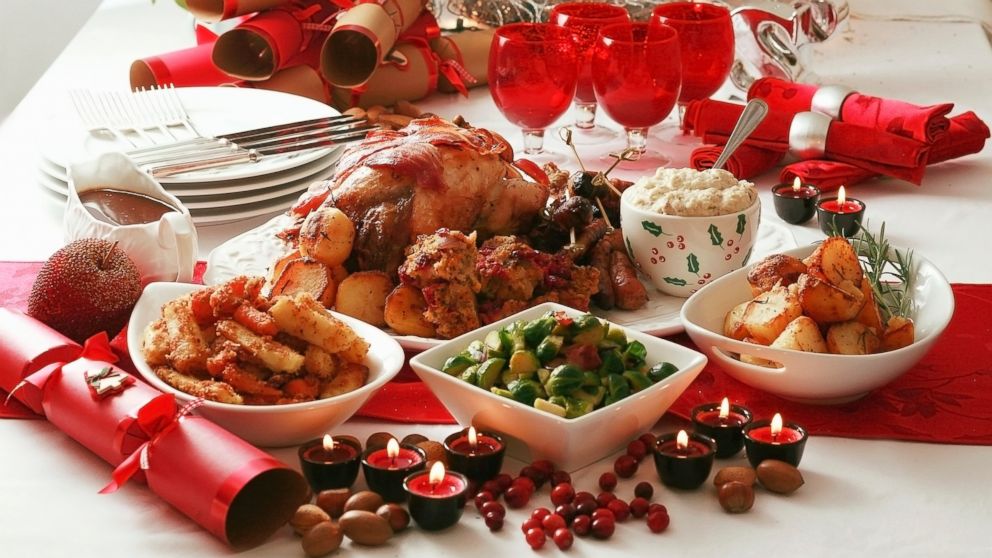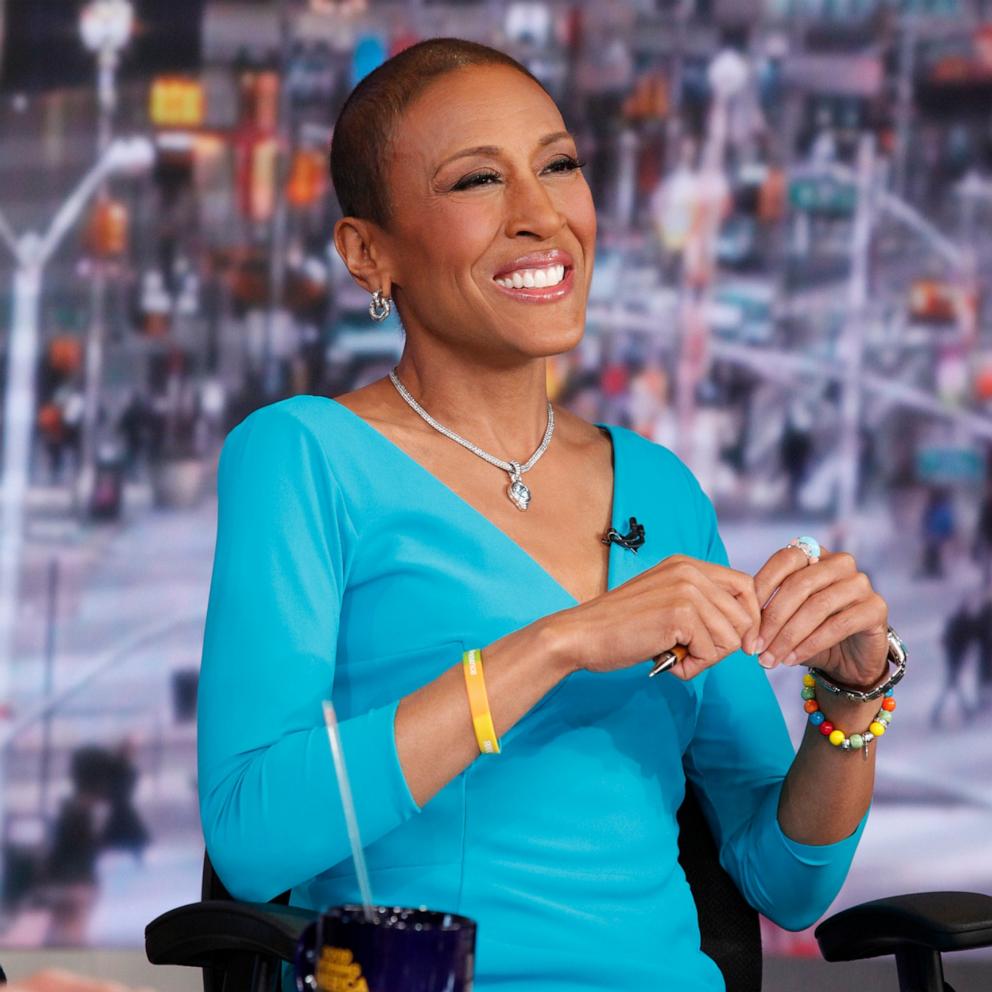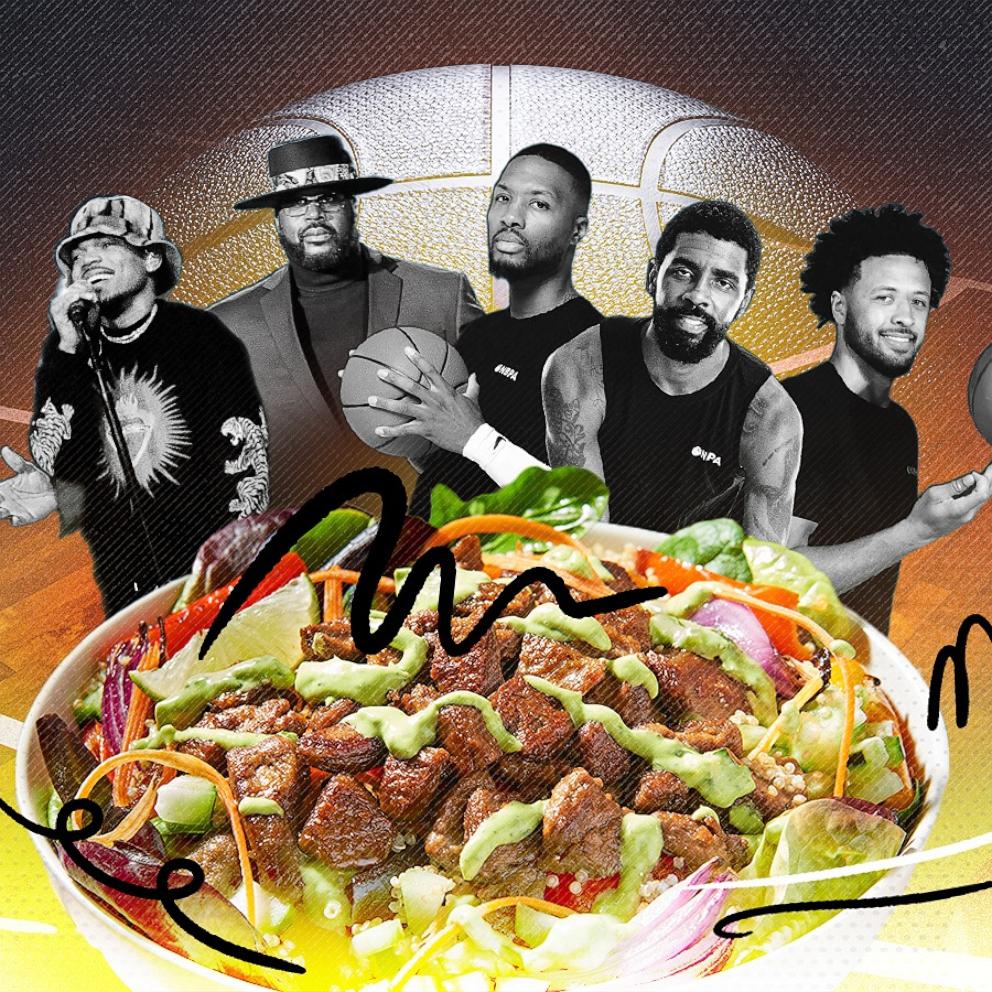How Many Calories the Average American Eats on Christmas
— -- The average person eats more than 7,000 calories on Christmas day, research carried out by Associated British Foods recently found. That's more than three times the U.S. Department of Agriculture’s recommended daily caloric intake.
Since that sounds like a lot of calories, ABC News asked Mary Hartley, the registered dietician in residence at Dietsinreview.com to break down what a typical day of eating on Christmas might look like.
A hearty family breakfast consisting of two pancakes with butter, syrup and sausage links kicks the day off with a total of 600 calories, Hartley noted, mapping out a plausible holiday meal. Many people will add a glass of orange juice -- that's an extra 110 calories.
And because it is a seasonal treat, they might also add a few sips of eggnog at a whopping 394 calories per serving, bringing the breakfast total up to 1110.
While most people will skip lunch in favor of an early dinner, Hartley said they will typically spend the day noshing. If they nibble on a few cookies and sneak another glass of eggnog, that’s an additional 775 calories, she said.
Just before dinner, the appetizers come out. Hartley said it’s more likely most people will consume several handfuls of chips and nuts, some crudité with dip, and a couple of appetizers totaling 1190 calories.
Christmas dinner is often a feast that includes turkey, ham, mashed potatoes, stuffing, rolls, veggies, salad, rolls, butter and gravy. It usually includes several glass of wine or beer, bringing the meal’s calorie count to 1730.
The calories continue to pile on with dessert. As Hartley pointed out, “who eats just one dessert?” Assuming two servings of sweets plus another small glass of eggnog, that’s an additional 1158 calories.
Those feeling a bit peckish later that night might put together a sandwich with some trimmings from the leftovers to end the day with an additional 600 calories.
Based on this scenario, the day totals up to 6,560 calories, according to Harley who used the U.S. Department of Agriculture nutritional database to estimate calorie counts.
Cedric Bryant, the chief science officer at the American Council on Exercise, said these estimates seem plausible except for perhaps the breakfast.
“Most people make the mistake of skipping breakfast thinking they’ll save up their calories for later,” he said, adding this is a strategy that often backfires, causing people to eat even more.
But even if you subtract the first calories of the day, that still leaves 5450 calories consumed on Christmas. Combining information about today’s eating habits with historical data, the British study estimated that this number is still nearly twice the number of holiday calories people ate on Christmas during World War II.




